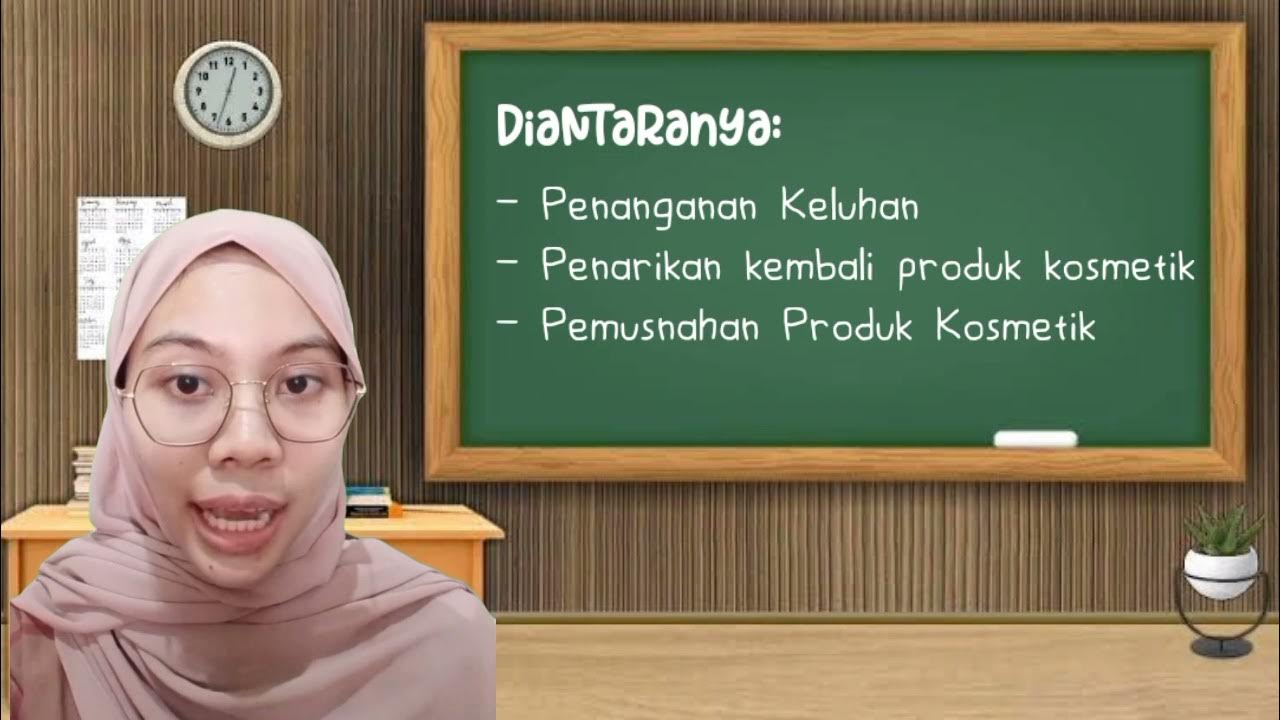Persyaratan Bangunan Pabrik Oleh GMP (Good Manufacturing Process)
Summary
TLDRThis video script outlines the key principles of Good Manufacturing Practices (GMP) in the food industry. It emphasizes the importance of ensuring food quality, safety, and regulatory compliance while reducing waste and improving efficiency. The script covers various GMP requirements, including maintaining a clean environment, using non-toxic materials, controlling pests, employee hygiene, and process control in food processing. It also highlights the significance of record-keeping and supervision in maintaining high product standards. Ultimately, it aims to motivate food industry workers to uphold GMP standards for better safety and quality.
Takeaways
- 😀 GMP ensures food quality and safety, fostering confidence in product and production safety.
- 😀 Implementing GMP reduces losses and waste, increasing efficiency in food production.
- 😀 GMP helps in adhering to Hazard Analysis Critical Control Points (HACCP), ensuring food safety protocols are followed.
- 😀 Food processing facilities must be well-maintained and free of rubbish to ensure cleanliness and safety.
- 😀 The design of processing buildings should align with the process flow to ensure optimal food production.
- 😀 Non-toxic materials should be used for processing equipment that comes into direct contact with food.
- 😀 Sanitation facilities and activities are essential for maintaining cleanliness and preventing contamination in food processing areas.
- 😀 Pest control systems should be in place, with good sanitation practices to prevent contamination from pests.
- 😀 Employee hygiene is crucial, with regular health inspections to ensure cleanliness and safety in the workplace.
- 😀 GMP emphasizes process control in three stages: pre-production, production, and post-production.
- 😀 Proper documentation and record-keeping, including production and expiry dates, enhance quality and safety assurance.
Q & A
What are the main advantages of implementing GMP in food processing?
-The main advantages of implementing GMP include ensuring food quality and safety, increasing confidence in product and production safety, reducing losses and waste, ensuring efficiency, implementing Hazard Analysis Critical Control Points (HACCP), and meeting production regulatory requirements.
What is the scope of GMP in food processing facilities?
-The scope of GMP in food processing facilities includes nine key areas: 1) Processing facilities' environment and location, 2) Building and facility design, 3) Processing equipment, 4) Sanitation facilities and activities, 5) Pest control systems, 6) Employee hygiene, 7) Process control, 8) Supervisory management, and 9) Recording and documentation.
Why is it important for the food processing facility environment to be well maintained?
-The food processing facility environment must be well maintained and clean to prevent contamination from rubbish and ensure that the production process is safe and hygienic for food products.
What are the requirements for buildings and facilities where food is processed?
-The buildings where food is processed must be designed in accordance with the process flow to optimize efficiency and hygiene, ensuring that food safety is prioritized throughout production.
Why is it important to use non-toxic materials in food processing equipment?
-It is important to use non-toxic materials for processing equipment because these materials prevent contamination of the food products, ensuring that the equipment does not release harmful substances that could affect the product’s safety.
What role do sanitation facilities and activities play in GMP?
-Sanitation facilities and activities are essential to maintain cleanliness in both the equipment that directly contacts products and the processing rooms. This helps prevent contamination from physical, chemical, and biological sources.
How does pest control contribute to GMP in food processing?
-Pest control is vital for preventing contamination. This can be achieved through proper sanitation, supervision of incoming goods or materials, and good hygienic practices to minimize pest-related risks.
What should food processing employees do to meet GMP standards?
-Employees must ensure their cleanliness and health by adhering to regular hygiene practices and undergoing routine health inspections to prevent contamination and maintain food safety.
What are the stages of process control in food processing under GMP?
-The stages of process control in GMP include pre-production control, production control, and post-production control, ensuring that each phase of the process is carefully monitored and maintained for quality and safety.
What is the importance of supervisory management in GMP?
-Supervisory management is essential for overseeing the production process, preventing deviations that could reduce product quality, and ensuring the production process remains in compliance with safety standards.
How do records and documentation help in GMP implementation?
-Records and documentation, such as production and expiry dates, are crucial for maintaining transparency and traceability in the production process. Well-maintained records contribute to better quality assurance and product safety.
Outlines

此内容仅限付费用户访问。 请升级后访问。
立即升级Mindmap

此内容仅限付费用户访问。 请升级后访问。
立即升级Keywords

此内容仅限付费用户访问。 请升级后访问。
立即升级Highlights

此内容仅限付费用户访问。 请升级后访问。
立即升级Transcripts

此内容仅限付费用户访问。 请升级后访问。
立即升级浏览更多相关视频
5.0 / 5 (0 votes)






